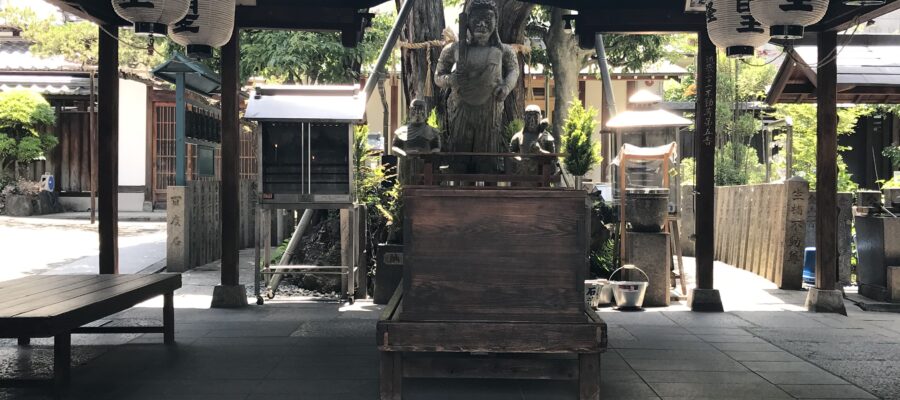近畿三十六不動尊 第5番
大阪の上町台地に立つ報恩院は、江戸時代初期に建立されたそうです。不動尊と同時期に植えられたという樟は、相生の樟として有名です。商人のまち大阪に、商売繁盛と家内安全の御利益にすがろうとする庶民の参拝が絶えなかったと伝えられています。お寺の門は北側に向いていて、中のお不動さんが門外から薄っすら見えています。
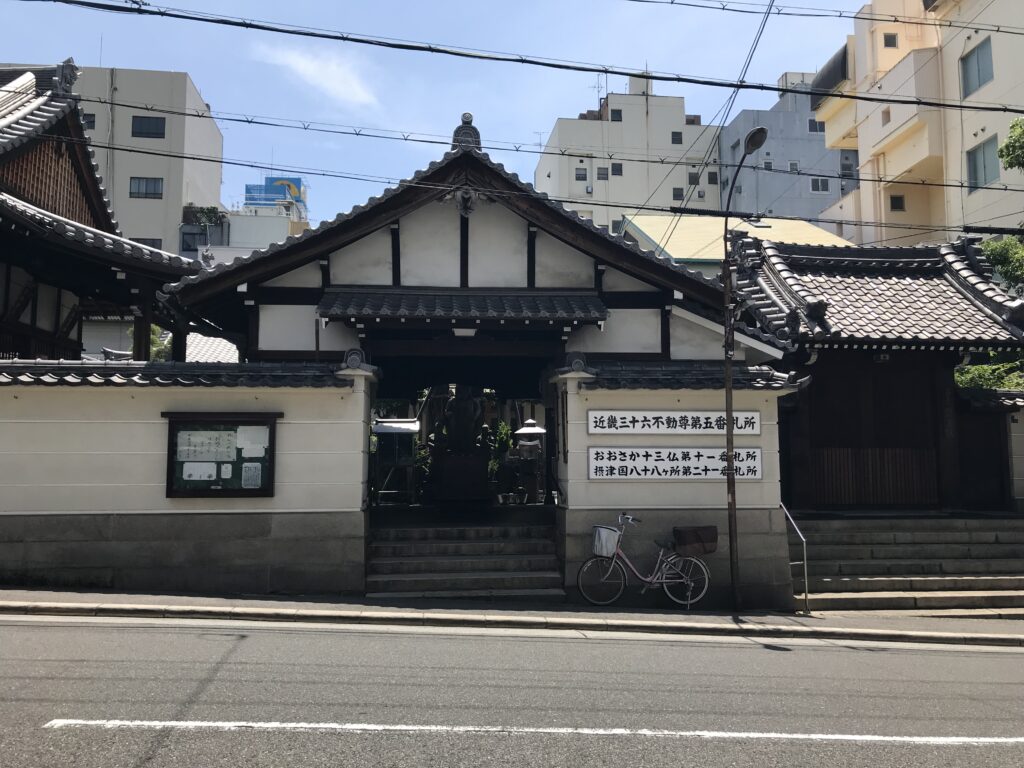
門をくぐると、お不動さんの姿が見えて来ました。近づいていくと、これまた厳しい顔をした不動尊です。両目を見開いて歯を剥き出しています。怖いというより、ちょっとグロテスクな感じがしています。このお寺の不動尊は北を向いているため、大阪では「北向きのお不動さん」として親しまれています。
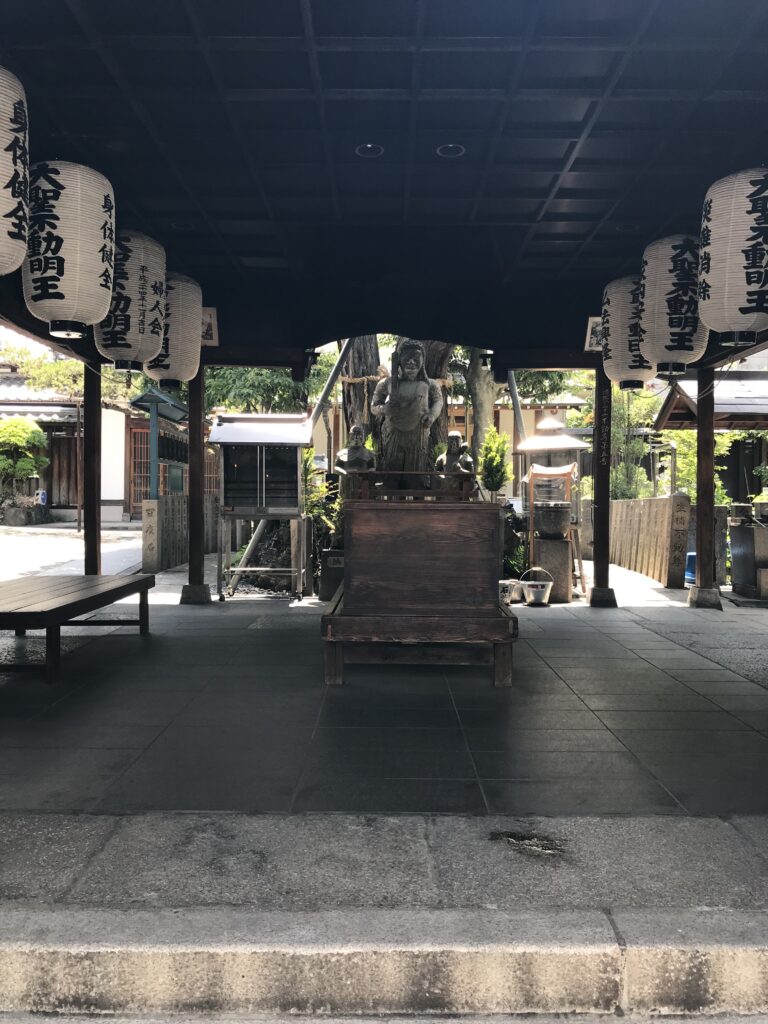
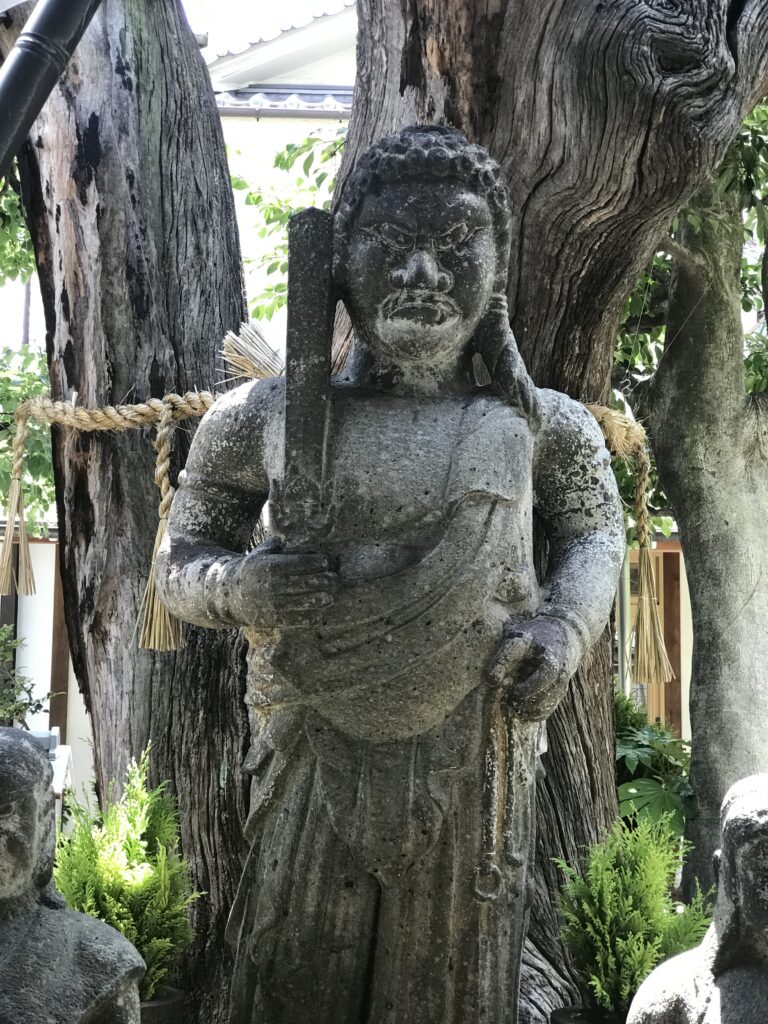
不動尊は怖い顔をしているのが普通ですが、それぞれに、「何々のお不動さん」という愛称がつけられていて、庶民に親しまれていたことがわかります。怖い者への畏敬の念というのが、昔の人にはあったと思われます。今は、ホラー映画などで、もっと怖い映像に慣れているので、不動尊の表情も、どこか長閑な印象を受けてしまいます。
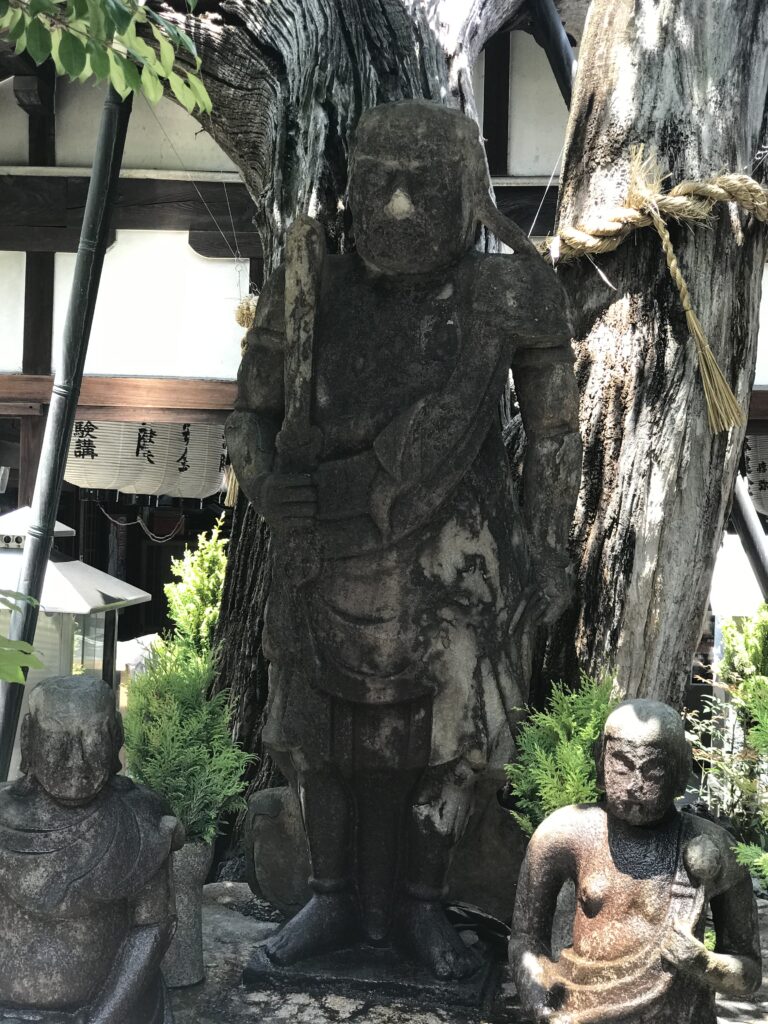
樟の反対側に回ってくると、ここにお水掛け不動さんが立っていました。私も柄杓で水を数回かけてきました。こちらの像はそれほど怖い顔ではなく、どこか上野の西郷さんの像を思い出させるようなプロポーションです。街中の小さなお寺には、地域の人々が大切にしているお不動さんがいることを、改めて感じました。(完)
報恩院の御宝印
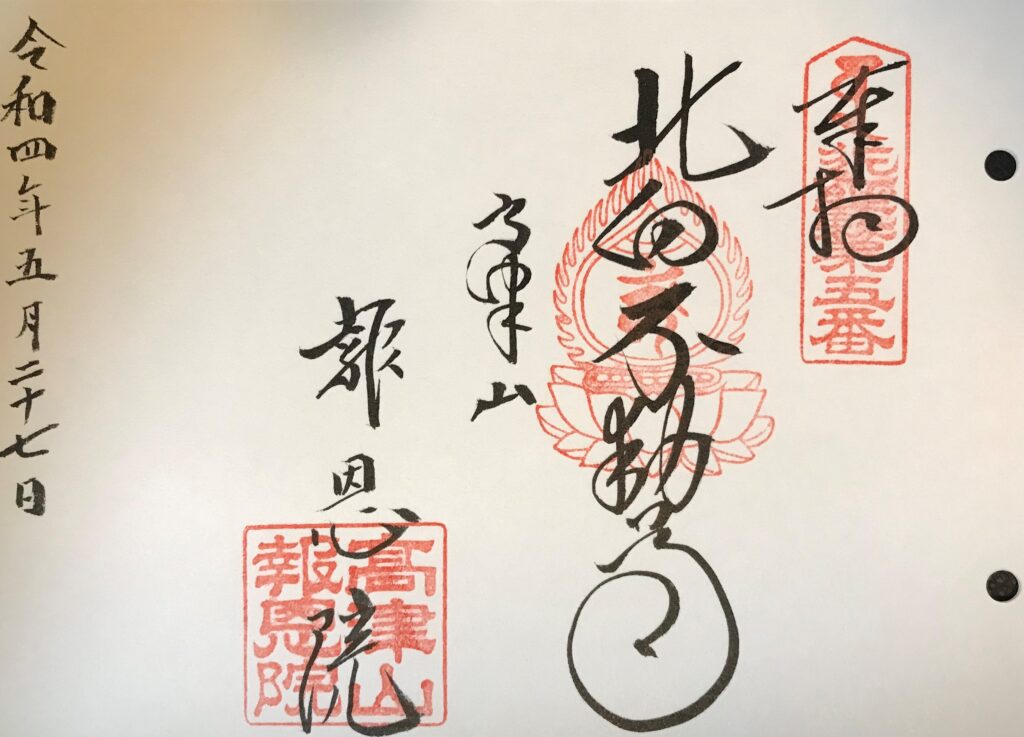
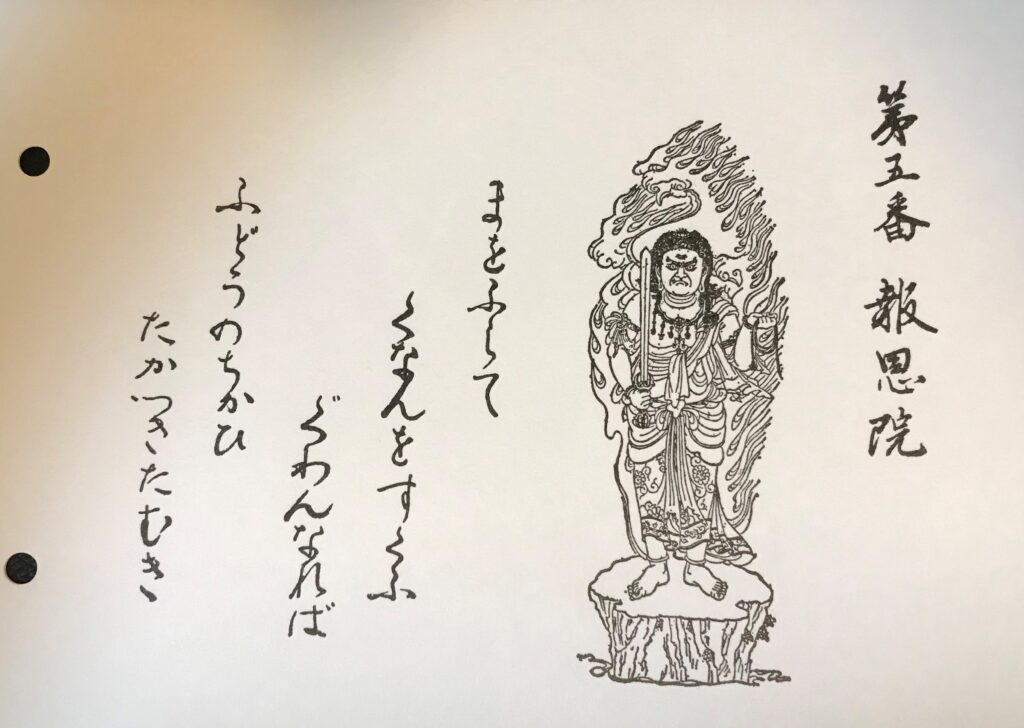
大阪のお土産

大阪名物 元祖たこ昌 お徳用袋入り たこ焼き 4袋セット (しょう油味・明石焼・ねぎたこ焼)AC-3#302
新品価格
¥4,800から
(2022/4/23 17:08時点)
Hoonin Fudozon Pilgrimage
Kinki Sanjuroku Fudoson No.5
Hoonin Temple, standing on Osaka’s Uemachi Plateau, was built in the early Edo period. The camphor tree planted at the same time as the Fudo statue is famous as the Aioi camphor tree. It is said that in Osaka, a city of merchants, the temple was constantly visited by common people who sought the blessings of prosperous business and family safety. The gate of the temple faces north, and the Fudo-san inside is faintly visible from outside the gate.
Passing through the gate, the figure of O-fudo-san came into view. As I approached, I saw Fudo-san with a stern face. His eyes are wide open and his teeth are bared. It is a bit more grotesque than scary. Because this temple’s Fudo-san faces north, it is known in Osaka as the “north-facing Fudo-san.
Fudo-san usually have scary faces, but each of them has been given the nickname “What-no-Ofudo-san,” which indicates that they were familiar to the common people. It is thought that people in the past had a sense of awe toward scary things. Nowadays, we are used to much scarier images in horror movies, etc., so the expression on Fudo-san’s face also gives a somewhat laid-back impression.
When I came around to the other side of the camphor tree, here stood the water-poured Fudo-san. I also poured water on him several times with a ladle. The statue here is not so scary-looking, but somewhat reminiscent of the statue of Saigo-san in Ueno. I was reminded once again that there is an Ofudo-san in a small temple in town that is cherished by the local people. (End)
Pèlerinage à Hoonin Fudozon
Kinki Sanjuroku Fudoson No.5
Le temple Hoonin, situé sur le plateau Uemachi d’Osaka, a été construit au début de la période Edo. L’arbre à camphre planté en même temps que la statue de Fudo est célèbre sous le nom de camphrier d’Aioi. On dit qu’à Osaka, ville de marchands, le temple était constamment visité par les gens du peuple qui cherchaient les bénédictions de la prospérité des affaires et de la sécurité de la famille. La porte du temple est orientée vers le nord, et le Fudo-san qui se trouve à l’intérieur est faiblement visible de l’extérieur de la porte.
En passant la porte, la silhouette de O-fudo-san est apparue. En m’approchant, j’ai vu Fudo-san avec un visage sévère. Ses yeux sont grands ouverts et ses dents sont visibles. Il est un peu plus grotesque qu’effrayant. Comme le Fudo-san de ce temple est orienté vers le nord, il est connu à Osaka comme le “Fudo-san orienté vers le nord”.
Les Fudo-san ont généralement des visages effrayants, mais chacun d’entre eux a reçu le surnom de “What-no-Ofudo-san”, ce qui indique qu’ils étaient familiers aux gens du peuple. On pense que les gens du passé avaient un sentiment de crainte envers les choses effrayantes. De nos jours, nous sommes habitués à des images beaucoup plus effrayantes dans les films d’horreur, etc., aussi l’expression du visage de Fudo-san donne-t-elle une impression de décontraction.
Lorsque je suis arrivé de l’autre côté du camphrier, j’ai vu le Fudo-san arrosé d’eau. J’ai aussi versé de l’eau sur lui plusieurs fois avec une louche. La statue ici n’a pas l’air si effrayante, mais elle rappelle un peu la statue de Saigo-san à Ueno. Cela m’a rappelé une fois de plus qu’il y a un Ofudo-san dans un petit temple en ville qui est chéri par la population locale. (Fin)
